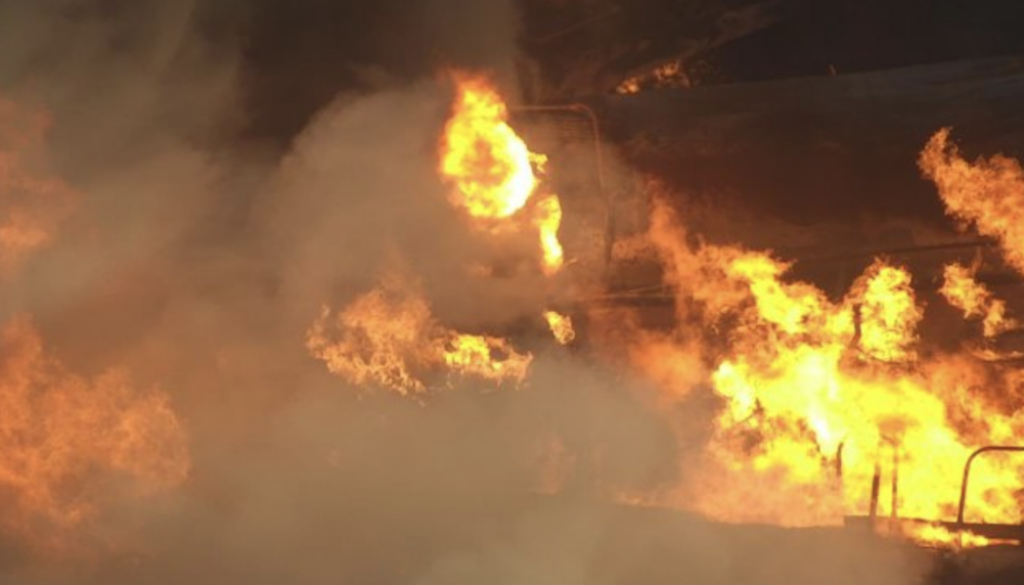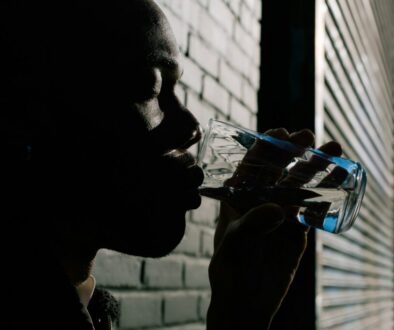Toxic vinyl chloride accidents happen once every five days, report finds
Accidental releases of toxic vinyl chloride have occurred in the United States once every five days, on average, since 2010, according to a new report that highlights the extent to which communities and chemical plant workers are exposed to the known carcinogen.
The findings add to a growing body of evidence on the frequency of hazardous chemical accidents, including a 2023 report that found such incidents occur in the US almost daily.
Environmental, public health and community advocates have been calling on the US Environmental Protection Agency (EPA) to ban vinyl chloride following a February 2023 train derailment in East Palestine, Ohio, which resulted in a “controlled” combustion of vinyl chloride in several rail cars that exposed residents to the chemical.
The report, produced by Material Research L3C on behalf of the environmental groups Beyond Plastics and Earthjustice, is intended to help inform the EPA as it takes steps towards conducting a risk assessment of vinyl chloride, along with four other toxic chemicals, a move the agency announced in December. The review, conducted under the Toxic Substances Control Act (TSCA), would be the first step towards considering a potential ban on vinyl chloride or additional restrictions to help protect public health and the environment from exposure to the chemical.
In public comments to the EPA, the groups Beyond Plastics, Earthjustice, and Toxic-Free Future urged the agency to quickly move to designate vinyl chloride as a “high priority substance” so that it can begin the risk evaluation.
“It’s critical that this process starts now so it doesn’t become a decades-long process like asbestos did,” Judith Enck, president of Beyond Plastics and a former EPA regional administrator, said during a news conference on Tuesday. Last week, the EPA announced a ban on asbestos after over 60 countries had already banned the known carcinogen.
Beyond East Palestine
Vinyl chloride is a petroleum-derived chemical used to make a type of plastic material called polyvinyl chloride (PVC), which is used in a variety of applications such as pipes, packaging, insulating materials, and consumer goods. While PVC is widely used, the chemical it is derived from is highly toxic. Vinyl chloride has been recognized as a carcinogen for decades, and the federal government’s concerns over its health impacts led to the original enactment of the TSCA in 1976.
Vinyl chloride exposure can result in numerous adverse health effects, such as liver toxicity, cardiovascular diseases, and cancers like leukemia. Acute exposure can cause headaches, dizziness and trouble breathing, and high levels of exposure can be fatal.
While the East Palestine train derailment brought a national spotlight to the hazards posed by vinyl chloride transport, the incident was far from the only significant unplanned release of this chemical to have occurred in recent years.
More than 966 unplanned chemical incidents involving vinyl chloride have been reported since 2010, averaging roughly one incident every five days for the past 13 years, according to the report. “The frequency of these incidents reveals they are a feature rather than an anomaly for the vinyl chloride industry,” the report states. Causes of unplanned releases can range from minor equipment malfunctions and leaks to explosions and full-blown chemical disasters.
Some unplanned releases have occurred during vinyl chloride distribution, such as the East Palestine train derailment and a 2012 train derailment in Paulsboro, New Jersey that generated a vapor cloud sickening hundreds of people. But most unplanned releases have occurred at vinyl chloride or PVC production facilities, where workers and neighboring residents are especially vulnerable to toxic exposures. On average, more than 66 such incidents occur per year, the report states.
“We need change”
As the volume of vinyl chloride production has grown, so too have the potential opportunities for human exposure to this dangerous chemical, the report finds. Vinyl chloride production in the US has nearly tripled over the past 50 years, with 12 manufacturing facilities producing a record quantity of more than 18.6 billion pounds of the chemical in 2021. Around half a million pounds of vinyl chloride air emissions are reported annually, with just a dozen facilities that manufacture vinyl chloride and/or PVC responsible for 82% of these emissions between 2010 and 2022.
Nearly 700 federal Superfund sites – hazardous waste sites the EPA designates for cleanup – are contaminated with vinyl chloride, according to the report. Groundwater and soils that become contaminated with the toxic chemical can release hazardous vapors into homes and buildings.
Additionally, the report warns of vinyl chloride’s potential to leach from PVC pipes into drinking water, and notes that PVC is still used extensively in consumer products including children’s toys like rubber duckies.
While Enck applauded the EPA’s recent move towards assessing the risks of vinyl chloride, she called the federal government’s long-standing lack of action “irresponsible.”
“We need change,” she said. “We cannot wait another 50 years.”
(Featured image: Train carrying vinyl chloride in flames after the 2023 derailment near East Palestine, Ohio. Photo by US EPA.)
 EWG
EWG


